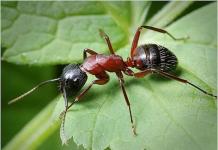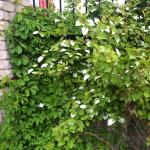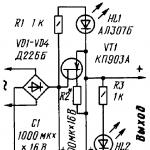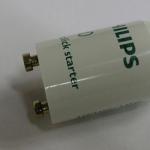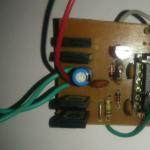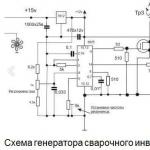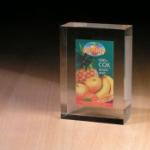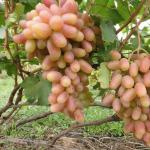Many people have probably noticed that if ants appear on a plant, then after a while the upper leaves will be covered with aphids, then they will curl and become sick. What connects these insects is the symbiosis of aphids and ants or a kind of friendship.
In order to find the answer to this question and the correct way to fight these insects, let's look a little into their way of life.
Lifestyle of aphids
Plants affected by aphids have leaves curled, shoots and buds are modified, deformed, growth is significantly slowed down, and fruits do not ripen. A weakened plant is not able to survive the winter.
In addition to causing direct damage, aphids are carriers of various forms of viruses, which cause various anomalies (galls and gall-like formations). Promotes fungal diseases, one of which is sooty fungus, which covers the foliage with a continuous layer of sticky liquid, which depresses the already weakened plant.
Aphids feed on plant sap, which contains carbohydrates and amino acids. In the process of life, they secrete a large amount of sweet liquid (honeydew or honeydew). These secretions are attractive to other insects, especially ants.
How do ants live

Ants– belongs to the family of social insects (they do not live alone, but in families/colonies); superfamily - ants, order Hymenoptera. The most common insects on the planet, there are more than 12,000 species. They feed on food rich in carbohydrates and proteins, such as honeydew, plant juice, seeds. Ants are insects with a sweet tooth, their favorite food is honeydew secreted by aphids, scale insects, and scale insects.
Dear visitors, save this article on social networks. We publish very useful articles that will help you in your business. Share! Click!
Insect symbiosis
How does symbiosis with ants manifest itself:
- ants feed on the sweet secretions of aphids, so they usually live on the plant together, transferring them to new unaffected plants for feeding and reproduction;
- protect aphids from attacks by predators such as ladybugs, which feed on aphids, mealybugs, whiteflies and other garden pests, providing particular benefit. But the ants jealously guard their “herd” and suppress any attempts to attack;
- when the number of aphids exceeds the number needed by the ants, they eat the extra individuals, thus regulating their “population”;
- with the onset of autumn, they take the aphids into the anthill and leave them on the roots of the plants; with the warm rays of the sun, they are brought out again onto the plants;

How to fight
Therefore, it becomes clear that they cannot live without each other, which means that if you want your plants to be healthy, you need to get rid of both insects at the same time.
Aphids are the main source of sweet secretions, and if there are no aphids in the area, then there will not be a huge number of ants. You should start fighting aphids; you can use all available methods:
- mechanical removal (manual collection);
- the use of biological products and herbal repellent infusions;
- attracting natural enemies to the fight (ladybugs, lacewings, ground beetles);
- use of insecticide preparations;
We can conclude that the most effective way to get rid of two types of insects is to limit the number of ants through timely control of aphids.
And a little about secrets...
Have you ever experienced unbearable joint pain? And you know firsthand what it is:
- inability to move easily and comfortably;
- discomfort when going up and down stairs;
- unpleasant crunching, clicking not of your own accord;
- pain during or after exercise;
- inflammation in the joints and swelling;
- causeless and sometimes unbearable aching pain in the joints...
Now answer the question: are you satisfied with this? Can such pain be tolerated? How much money have you already wasted on ineffective treatment? That's right - it's time to end this! Do you agree? That is why we decided to publish an exclusive interview with Professor Dikul, in which he revealed the secrets of getting rid of joint pain, arthritis and arthrosis.
Unique video - ants milk aphids
We were tormented by ants in the garden. They build their underground anthills everywhere, it's a real invasion! The worst thing is that they loosen the soil under the roots and breed aphids on the plants. This summer we destroyed one of the anthills and saw that even the roots were covered with aphids. Do aphids really live underground now? These insects are pale, almost transparent, like lice larvae, and their number is huge. Tell me how to deal with these pests?
N.P. Berestova, Samara.
Regarding aphids, you correctly noticed the external similarity: representatives of the aphid family have another name - Grass lice. Colonies of green or black aphids usually feed on leaves and shoots. Underground aphids are typically white or beige in color. They have always existed, just because of their secretive lifestyle they are rarely seen.
At first, all root aphids were classified as special independent species and allocated to the group of root or ground aphids, but subsequent observations showed that in many cases root aphids represent an underground generation of aphids living on above-ground parts of plants. In other words, these aphids migrate (relocate) from above-ground organs to the roots of the same or another plant. For example, this is the behavior of the blood aphid (Schizoneura lanigera) on an apple tree and the famous phylloxera (Phylloxera vastatrix) on a grapevine.
Typically, several generations of wingless aphids (exclusively females) develop underground, then the last generation receives the rudiments of wings (nymphs) and, finally, turns into winged individuals that fly to other plants.
Symptoms of root aphid infestation: cessation of growth, loss of shine and pallor of leaves in the obvious absence of other pests. Plants damaged by root aphids are very susceptible to fungal diseases. With severe damage, the leaves wrinkle and the plant gradually dries out.
Aboveground aphids are in close collaboration with ants. In return for the sweet juice that the aphids supply to the ants, they protect it from insect predators and take it to their anthills for the winter. Aphids living on plant roots would not be able to exist without the help of ants. They themselves are not even able to clear the way deep into the soil - this is done for them by the “milkkeeper” ants, who bring their “winged cows” to the underground galleries (many adult aphids have wings), and then free them from unnecessary wings. The ants take the offspring under protection and carry it underground, settling it on new roots. At the moment of danger, they grab aphids and hastily carry them into holes and crevices. Interestingly, the aphids do not even resist and obediently freeze in the paws of their saviors.
COMBAT MEASURES
Aphids are a dangerous pest. When present in large numbers, it can greatly weaken plants. As a result, they freeze slightly in winter, and seedlings may even die. In the initial stage of infection, aphids can simply be crushed with your hands (on rose buds) or washed off with laundry soap. In case of mass damage, it is necessary to use insecticides.
If you suspect root aphid infestation, the plant must be dug up and damaged roots cut off. If the root system is significantly damaged, then the crown of the plant will have to be trimmed to balance the above-ground and underground parts. The contaminated soil from the hole must be removed and covered with new soil. Rinse the roots and immerse them in an insecticide solution for 10 minutes, then plant the bush in another place.
After treating plants for aphids, ants can quickly rebuild the colony by transferring surviving individuals to untreated plants. Therefore, it is necessary to take measures against ants. Gardeners often complain that it is impossible to kill ants. There are many folk methods and chemical preparations to combat ants, but they turn out to be ineffective. There are several reasons for this.
Often the preparations are scattered (or spilled) over the surface of the anthill without destroying it. Therefore, granules and solutions do not penetrate inside and kill only a small part of the ants. The population quickly recovers in its original place or simply changes its place of residence. If the anthill is located far from cultivated plants, then when destroying it, try to grab as much soil as possible along with the larvae with a shovel. On loose soils, storehouses with eggs and larvae are located in tiers at a depth of 10-20 cm. You may be able to destroy the queen too. In this case, the ants will not restore their home in the same place.
A common reason for chemicals not working is that they have expired. When purchasing medications, make sure that they are not expired. In some stores, chemicals lose their properties due to improper storage and turn out to be useless, despite the fact that the expiration date has not yet expired.
Sometimes gardeners lose hope of driving ants away from their favorite beds and simply give up. But if no measures are taken, then the ants will, of course, breed throughout the garden. As they say, “all means are good in the fight against the enemy.”
Try to drive away the ants by sprinkling baking soda or ammonium nitrate on the destroyed nest. They say that they go away if you water the anthill with a strong infusion of tomato tops, boiling water, or several times with urine. Ants abandon their home if rotten fish remains are buried in it. Among chemical preparations, gardeners note Grom-2 And Muratsid.
The drug Grom-2 sprinkle the soil in places where ants accumulate. The earth is well loosened, and after a day or two they leave. The effect lasts for 3 months. The liquid drug Muracid is diluted in 5 liters of water (3-4 drops) and sprayed (or watered) on the ground around the plants. It is advisable to destroy the anthill first. After a day the ants leave. The action lasts 2-3 months.
Most folk methods and chemical preparations have a local effect. This reduces their effectiveness, since ants are very mobile creatures and quickly move away from danger.
To “deceive” the ants, special poisoned baits have been developed. They differ from other drugs in that the ants themselves bring them into the anthill. Such miracle remedies include Absolut-bait and Vesta-333. They are available in the form of granules and gel. The gel can be lubricated on tree trunks to prevent ants from crawling into the crown. Baits need to be renewed as they are eaten and washed away by precipitation. The effect of the drug does not appear immediately, so the ants have time to feed it to both the queen and the young. If the queen dies, the anthill will also die! This means that the hated aphids will have no defenders.
This is interesting
It is known that The aphid's worst enemy is the ladybug. Do you know why it is called that? When there is danger, droplets of brown liquid appear on the bends of this bug's legs - milk (hence the name - ladybug). This milk makes it inedible for birds, and its bright color has a warning meaning - don’t touch it! Ladybugs can be transferred from the meadows to your garden. There are a lot of them on tansy and horse sorrel. You need to collect bugs early in the morning, when the air is cool and they are less mobile.
Number of impressions: 17086
Rating: 2.77
Anthills, along with their small inhabitants, are a mandatory attribute of any dacha. Of course, these insects are very useful in nature and belong to the “forest orderlies,” but they can cause serious harm to vegetables, fruits, berries and flowers, so you will have to constantly fight ants in your summer cottage.
To date, more than 8.5 thousand species of ants are known. They live in vast colonies, which can include several hundred insects. Ants raise their offspring in huge dwellings - anthills. The insects in question feed on mushrooms, leaves and plant sap. And their life expectancy is approximately 12 months. This information should be taken into account when fighting ants in the country.

First of all, it is worth noting that ants love ripe fruits and berries, especially garden strawberries. As a result, many fruits can be bitten and can no longer be eaten by humans.
Ants are very thrifty insects, so they often drag plant seeds into their houses. Among them may be weeds. As a result, the site owner will need to spend much more time on weeding.
The first two points are the most harmless. The maximum harm to a garden plot is caused not even by the ants themselves, but by their “pets” - aphids. The insects under discussion breed whole herds of beneficial aphids. This is necessary to obtain sweet milk from her. To ensure that there is enough delicacy for everyone, the ants try with all their might to increase the number of their “pets”. The aphids, which they transfer to the branches and leaves of various plants, suck the juice of their shoots, thereby making them weak.
In addition, it is a carrier of a variety of diseases dangerous to crops. Miniature “cows” overwinter in a warm anthill, and in the spring, insects again place them on fresh, untouched leaves and even on the roots of plants, specially digging small passages to them. As a result, crops may not just weaken, but completely stop producing crops. Their appearance also noticeably deteriorates - the leaves turn yellow and curl, and the shoots stop growing.

Interestingly, in addition to aphids, ants also have other pets, which they breed and “milk.” This certain types of caterpillars, psyllids and cicadas. They can also cause serious damage to plants.
In addition, garden ants, like moles, can greatly damage a lawn, flower beds or alpine hill. If the molehill turns out to be small enough, then the anthill can reach enormous sizes, increasing every day. If you do not destroy it immediately after its appearance, the height of the object can reach 1.5 meters. Therefore, measures to combat ants and their nests should be taken as early as possible.
Having studied the presented list, we can conclude how important it is to begin the destruction of insects that appear on the garden plot in a timely manner.
Methods for controlling garden ants
Of course, fighting ants on a site is a rather complicated process, but it is quite possible to destroy all pests on it, if you do it correctly. The tips published below will help every garden owner with this.
Protecting trees and shrubs
First of all, you need to protect the trees and bushes in your garden from ants. Otherwise, in the process of fighting insect colonies, they will all simply move to tall plants, and in the future they will build new strong anthills for themselves.
You can use the following actions:

Having properly protected trees and shrubs from insect attacks, you can begin to destroy anthills.
Destroying anthills
Since most of their inhabitants and uteri do not appear on the surface, then conventional spraying of plants with pesticides will be useless. The poison must be delivered directly to the queens and larvae, resulting in the death of the entire colony. That is why modern chemicals for fighting ants, produced in the form of gels, granules and powders, do not act instantly on the spot, but after some time, allowing the insects to carry the poison into the anthill themselves.
To the owner of a garden plot All you have to do is choose the right product in a specialized store and place it on the paths between the beds, as well as near insect nests. The gel can also be applied to tree trunks favored by ants.
Traditional methods of fighting ants
If it is not possible to purchase ready-made pesticides designed specifically to combat ants in the garden, then You can also use folk recipes for this.. There are a huge number of them; you just need to choose the simplest and most accessible one for yourself.
- Instead of poison, you can place fresh wormwood, garlic cut into small pieces, cinnamon sticks (or ground spice) or sprigs of fresh mint at the dacha in places where ants accumulate, as well as near plants that need to be protected.
- As soon as the anthill is excavated and destroyed with a shovel, you need to pour a bucket of boiling water into it. There should be a lot of hot liquid.
- You can take some bait that is tasty for ants (for example, honey or minced meat), add boric acid to it and place it near the insect nests.
- It helps in the fight against the pests discussed in the garden by watering anthills with sugar syrup mixed with yeast.
All of these methods allow you to get rid of ants in your garden and get a rich harvest that is not damaged by small pests.
Aphids and ants type of relationship symbiosis breeding graze milking protecting trees from ants and aphids
Ants and aphidsAnts and aphids type of relationship
The first more or less warm sunny days occur in Crimea at the end of March - beginning of April. If at this time you quickly open the Lasius nest, then even an experienced eye will not always and immediately notice the slow movement of clumsy aphids among the feverishly darting dark ants.
Excavations reveal aphids in the anthills of many species.
It is not surprising to find in the soil a worm or a mole cricket armed with powerful burrowing legs, but an aphid with its defenseless, transparent, naked body, sometimes with shiny delicate wings - how does it exist here?
In search of a solution, we will follow in early spring, as soon as the snow melts, the area marked since last year, where there were exits of an ant nest.
We must, of course, be patient. In the end, you can see how the first, gradually growing holes appear on a flat, rain-compacted surface. Someone invisible throws dark wet grains out of the ground through them, clearly visible on the graying dry soil.
Finally, an ant runs out of one exit, followed by another, a third... The next day the number of open passages increases, and soon roads are built from them to the nearest birch trees. And now the six-legged scouts are climbing the white-barked trunks, hurrying along the branches, moving from bud to bud, with their antennae touching the smooth robe of the shoots.
At the beginning of April, the first sticky leaves bloom on the tree, very small, but already similar to real birch leaves.
Ants on the tree in the morning! All day they hurry up and down the trunk, feel leaf after leaf, run along the branches higher and further, then return to begin studying the tree again. Only towards sunset, having examined the entire crown, the last scouts descend the trunk.
The next day or the next day, in the hot afternoon, a large aphid rises from the funnel of the main passage, following the ants, slowly moving along the slope. She is accompanied by a fast ant. Then more aphids emerge from the funnel, also guarded by ants. After staying for a short time
air, they all return underground... And after a day or two, their exit into the open sky turns out to be no longer a short walk, but a final relocation from the underground. And now, on many of the opened birch buds, wingless aphids are moving, each of which is guarded by a large ant.
If such an ant is marked at a post in the morning, then it can be identified again here in the evening, even if it was already dark and windy. However, the next morning there may not be any ants or aphids on the tree that were there at night. During the day, aphids appear again, and at night they disappear again.
In general, this is approximately how it is: ants really carry aphids underground.
It’s rare that anyone has not seen a cat carrying a blind kitten, or a dog with a puppy in its teeth. No matter how familiar this sight is, when watching it, you always hide a confused surprise in the depths of your soul: from whom could they learn this?
And here an ant carries aphids in its jaws. He takes her off the branch and delivers her unharmed to the underground galleries of the nest.
The aphid that the ant is dragging has its legs drawn up and lies motionless in its jaws, as if dead. It is not immediately possible to even notice that she is alive. Taking it away from an ant is not easy: it holds the insect tightly and does not intend to let go. Only if you press it with something, preventing it from moving, it will open its jaws, and then the seemingly dead aphid suddenly comes to life and runs away with all the agility of which this clumsy creature is capable.
The transfer of aphids by ants can be observed in the spring on the eve of a cold night or in the summer in the middle of the day before bad weather, or even in the best weather, but when the branch is so overpopulated with aphids sucking it that the ants transfer their charges to other, still free branches and even to other trees.
Only after it warms up completely and steadily are the aphids released “into the wild.” However, not entirely at will.
On a low apple tree, in the crown of which you can freely examine any branch from all sides and at the foot of which the exits of the nest of black Lasius ants are clearly visible, one of the branches is marked with yellow paint. The ant guarding the large green aphid on this branch is also marked with yellow paint.
Now it is not difficult to make sure that aphids do not wander around the tree at random: ants guard the same aphids for many days in a row, without releasing
them from supervision.
Protected by an ant, the aphid does not remain alone for long. But even before the first generation of her offspring is born, she pierces the shell of the plant with the long bristles of her proboscis, penetrates its sieve tubes and begins to suck sugar-rich juices. Her shepherd comes up to her from time to time and touches her abdomen with one or the other antennae. Here it should be said that, in the opinion of many naturalists, in those species of aphids that do not secrete wax, the end of the abdomen, its external appearance from the back, has in general something similar to the front part of the head of an ant. Their anal tail resembles an ant's lower lip, and the siphons extending from the sides of the tail are located like ant palps. The similarity is further enhanced by the fact that when an ant approaches, the aphid raises the tip of its abdomen and crosses its hind limbs, moving in a special way, with the antennae of the ant. In the same aphids that secrete wax, the end of the abdomen is always covered with a shapeless wax mask; and no matter how much honeydew they secrete, the ants do not pay any attention to them.
For aphids, as well as for gatekeeper ants, which cover the entrance to the nest with their heads, the touch of the antenna to the siphons has a special power. The end of the aphid's abdomen can be tickled as much as you like with a needle, feather, bristle, hair - it does not react in any way to the fake ant invitation. The touch of the antenna acts unmistakably: the aphid secretes a sweet drop, and the ant immediately picks it up with its tongue.
Having filled its crop, the ant leaves the aphids and heads towards the nest, but usually does not reach it. Having met a brother on the way, he crosses his antennae with him so that he freezes in anticipation and stretches out his tongue in response.
Having given the sweet load to the person he meets, the ant with an empty crop returns to the aphids, and the one who has received the food turns and hurries to the nest.
If there are no ants near the aphids, then with a sharp movement of their hind legs they throw away the drops they secrete. If the tree is constantly visited by ant foragers, aphids are definitely waiting for honeydew and honeydew collectors.
The name that Linnaeus assigned to the aphid, “Formicarum vacca,” that is, “Ant-cow,” as we see, cannot be denied accuracy.
There are winged aphids. Their thin and shiny roof-shaped wings are too long and prevent the foragers from picking up a droplet. To make their task easier, the ants cut off the wings of their milk nurses without any special ceremony.
Immediately after sunrise, as soon as the morning coolness has dissipated, the first ants run out onto the beaten path to the plants on which aphids live. A little time will pass, and a chain of foragers with full crops will reach the nest in a parallel course.
It is most convenient to observe these oncoming flows on tree trunks: ants rush up for food and move down with food. And it is noticeable to the eye that those returning are rounder, larger. You can collect and weigh hundreds of both. The difference in weight is easily detected on a simple laboratory scale.
Having covered the top of the shoot and the axils of the leaves with a thick rash, the aphids suck their food, while the ants are completely absorbed in collecting drops. On the satin background of the young shoot, among the mass of wingless aphids, the dark contours of an ant stand out sharply, which, with blows of its antennae, hurries off one of the insects.
And suddenly something changed in this peaceful landscape.
Protection from enemies
The ladybug - a round, varnished, red pea with black specks on thin legs - is still quite far away, but the ant has already stopped milking and raised its antennae.
If a ladybug gets to the aphids, they will be in trouble: the piously called predator is a desperate glutton and is capable of destroying a lot of aphids. But the ants will not allow this. Just like shepherds who notice a wolf, they rush to protect their flock...
Turning sharply, the first one rushes, running over the bodies of aphids towards the enemy. The second ant, emerging from the underside of the leaf and running headlong after the ladybug, attacks her from behind. A third, a fourth appears from somewhere else. A moment - and before the ladybug had time to raise her elytra and spread her wings to take off, the ants had already grabbed onto her, and although one wriggles, grabbed by her strong jaws, others gnaw at her legs. Only after the predator retreats does everything return to normal.
Now the ants don’t need to bother the aphids much. The first touch with the antennae is enough for a drop to appear: while there were no ants, the aphids made no attempt to discard the secretions.
Ant protection saves aphids from many hardships and misfortunes, not only on earth.
To verify this, it is enough to look underground, not too deep, of course, but at least to the depth of the roots on which aphids live. However, this must be done in such a way as not to disturb the delicate insects.
The best thing is to germinate several wormwood plants in glass tubes, and when the roots develop so much that they begin to adhere to the glass, the tubes should be placed not far from the anthills of Lasius niger or Lasius alienus and sprinkled with soil on top.
After some time, scraping the covering soil from the tubes, you can see everything that the ants are doing there: how they deliver winged female aphids underground and plant them on the roots; how they then chew off the wings that are no longer needed by the aphids; how droplets secreted by aphids are regularly sucked out.
Let's add to everything that has been said that ants protect aphids not only from other insects, but also from other ants.
The low apple tree, which has already been mentioned and on which one of the branches was marked with yellow paint, was once attacked by red ants, who tried to get through to the aphids. The black ants did not retreat; many of them surrounded the base of the trunk, preventing the red ones from moving forward. Reinforcements, raised by alarm, were drawn from the nest to the site of the collision.
Such battles can be observed around the thistle, where black aphids live (they are visited by red ants), and at the base of a young pine tree, where the aphids live...
After everything that has been discussed here, it may no longer seem too surprising that ants, protecting their aphids, keep aphid females in anthills and that aphid females lay eggs in anthills. Ants - and more than one species - keep aphids and their eggs alive, lick them, hide them from excess dampness or dryness, from heat or cold, from predators.

How to get rid of aphids using folk remedies is a problem that worries many gardeners and gardeners. At the same time, forgetting that aphids are a consequence, not a cause. The main reason is the ants, which feel free in our areas.
Fighting anthills and ants first of all. They are the ones who cultivate aphids like dairy cows, from which they drink milk. In their underground labyrinths, ants store aphid larvae even in winter.
Folk remedies will help against aphids and ants
I came up with my own means of fighting aphids. With my favorite Veta (lapdog) every summer at the dacha. From time to time you have to use flea shampoo. I decided to dilute a couple of caps (about 3 tablespoons) in a 10-liter bucket of water and process the leaves of zucchini and a young apple tree. I got carried away and sprayed radishes, bushes, and trees. How long was the solution enough? I didn’t even think that the aphids would disappear. And she disappeared. Along with it, the cruciferous flea flea went away. I solved the question of how to get rid of aphids on cabbage, which the pest simply covered. The product is inexpensive, as long as I treat my plantings once a week. So, I saved my roses too. I buy flea shampoo at the pharmacy and at specialized stalls in the market. Liliya F., 38 years old.
My way of pest control
And I offer liquid green soap, which is especially suitable for flowers. You can fight aphids with folk remedies using tar soap or shampoo and tobacco. Nothing harmful to the plant, but it helps for shrubs, trees, vegetables and flowers (especially roses). Later, all this will be washed away by rain and the leaves will be clean. Pay special attention to and process the undersides of the sheets and the receptacle. I looked for my own way and tried others. This one turned out to be more effective. Irina V., 27 years old
Getting rid of the root cause of aphids - ants
You have seen how ants take a fancy to a tree and crawl to the top leaves of the branches. This is where they set up their “canteens”. And I used to think, as a young gardener, that smart insects climb up tree trunks to devour them, and I took them for cleaners. And I didn’t even know that ants weren’t so harmless. Here's my method for getting rid of insects. I buy ant glue, by the way, it comes in a syringe, and make spiral circles around the trunk. Just let them try to poke their noses in. They will stick there with their aphids. Vladimir Sergeevich, 45 years old.
What methods do resilient gardeners use to get rid of aphids? For example, wrap tree branches with sticky fly tape. We will try. All methods are good for controlling ants and aphids.
Traditional methods of fighting ants
A visitor to the Pro100ogorod website still suggests purchasing and using special “catching belt” glue. You can easily buy it at gardening centers. The product is sold in tubes and lasts all summer. It should be applied to the trunk in a circle with a stroke width of 8 to 10 cm and slightly smeared over the bark. Ants do not cross this cordon, and the bravest ones remain there forever. Then your area will be free of aphids and ants.
How to get rid of anthills and ants on the site
To get rid of aphids and ants in the garden using folk remedies, you can spray their habitats with a solution. It's called "Aardeater". A drug based on diazinon. In its proportion, it is not dangerous for people and does not accumulate in vegetables and fruits. Those ants that fall under its influence die. After two days the rest leave.
Neutralize the anthill. Dig it to a great depth and fill the hole with soda.
Reduce the number of ants on the site
- It is necessary to spray the trunks of bushes and trees with Muratsid 4–5 times per season.
- Since ants feed on aphids, spray the crowns affected by the pest with aphids.
Don’t be lazy to clean up fallen fruits and berries in the garden. - If there are no visible hummocks, a container with fragrant syrup or fermented jam will help get rid of ants. It needs to be placed under trees and bushes. Change the “feeder” periodically.
- Dip a washcloth into a solution of water and honey and place it next to the anthill. When the insects crawl onto it, pour boiling water over it. Do this more than once.
- A remedy that helped remove both ants and cabbage grass from the garden. Salted sprat or fragrant sprat are buried in the ground 15–20 cm shallowly (2 cm). Within a week there was no trace left of the small enemies.
Another way to get rid of ants on your property

I am sharing my method of getting rid of ants in the garden. There was no time to do this earlier. Probably, there is still some kind of force that controls a person. I struggled with ants for a long time. And the decision came somehow unexpectedly. I soaked the weeds in a barrel that stood in the sun. When the brew started playing, the smell became unpleasant. And this is easy to say.
I read on the Internet that ants flee from millet. Sprinkled it in places where insects lived. And after a while I think I’ll add more herbal mash. I saw it myself, the ants were running with their belongings, only their heels were sparkling. I didn't meet anyone until the end of the season. Now I know what to treat them with if they come to my site. Valentina Mikhailovna, 63 years old.
Video recipe How to get rid of ants
There are many recipes for getting rid of aphids and ants using folk remedies. We choose and try it in practice.



